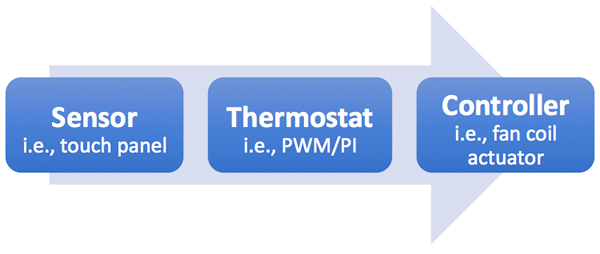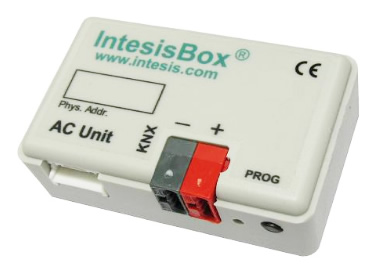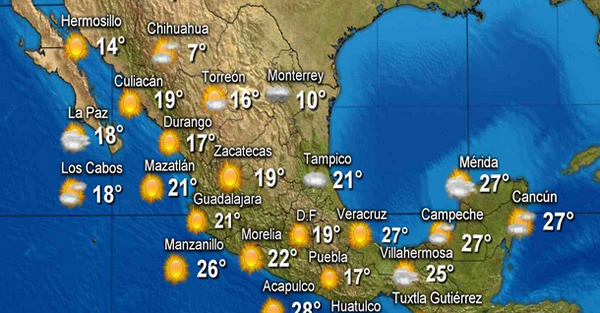 By José María Morcillo López, Domonetio KNX Training Center.
By José María Morcillo López, Domonetio KNX Training Center.
HVAC (Heating, Ventilation and Air Conditioning) is an integral part of every modern building and typically accounts for more than 60% of a building’s energy consumption. KNX offers solutions for 98% of the climate control systems on the market worldwide, either by controlling them directly, or via KNX gateways, and this offers a huge competitive advantage over other automation systems. From residential to industrial buildings, if your HVAC system has a KNX backbone, your control system will be structurally sound.
KNX is a global standard and is used the world over. Indeed it is the main technology used for building management in countries such as Germany, Russia, China, Brazil and Colombia. The HVAC needs of the customer will, however, vary from country to country, so the type of HVAC control we provide will depend on the territory in which we are working.

The first mistake made by a newbie KNX Partner is to assume that the functionality of cooling/heating systems is the same for all places and all types of building. Sometimes, the HVAC solution that we find ourselves working with may not be KNX-based at all, but does this mean that we should limit the use of KNX to, say, controlling the lighting only? The answer is a clear ‘No!’
KNX Basic Elements
Three elements must be considered when planning HVAC control using KNX: a sensor, a thermostat, and a controller or actuator. However, depending on the climate system, we could take out the thermostat, for example when controlling HVAC devices via direct gateways.

The sensor receives the requirement from the user, for example, ‘I want the set point temperature of this room to be 26C.’ The thermostat evaluates what the user wants, compares it with the actual room temperature, and if a heating/cooling demand is needed, it will send a signal to the controller to, for example, open the fan coil valve. In most HVAC systems, the thermostat is integrated into the sensor. However, it is also available as a separate functional block.
Residential HVAC Control using KNX
The first climate system that comes to mind in residential buildings is an air split, and there is a huge range of air-conditioning brands on the market. From the KNX side, there are two different ways to control splits: via a direct interface that is connected to the motherboard of the device; or by using an IR interface placed in front of the IR receiver. In both situations, we are emulating the remote controller, in the sensor (usually in a touchscreen). This means that the thermostat block has no function in such a system, since all of the logic is done by the AC machine under the commands coming from the sensor.

Commercial HVAC Control using KNX
The most commonly-used HVAC system in commercial buildings is the fan coil. A fan coil air-conditioning system uses an electro valve that is opened when cold/hot is needed, and three fans (or one fan with variable speed) that push the air out through the coil. In heating mode, when the valve is opened, the coil is filled with hot water, so when the fan blows air through the coil, the air is heated. In cooling mode, the coil is filled with cold water. In order to integrate a fan coil system with KNX, all we need is a 4-channel actuator with a fan coil application program. This is easy, fast, and affordable. In this situation, we need the three blocks mentioned above, namely the sensor, thermostat, and controller.
Knowledge of Location
It is important to take into account the needs of the user and the region in which we are working. Controlling an HVAC system in Colombia, for example, is not the same as in Germany, as heating is not a major issue in Latin America since outdoor temperatures in many areas never drop below 20ºC, especially in coastal regions. In very high-humidity regions, such as Thailand, Hong Kong or Mexico, controlling humidity is even more important than air-conditioning, requiring expertise in this area rather than in boilers.

Conclusion
KNX offers a great range of devices to control HVAC systems. Before making any decision about which product/brand to choose, I recommend that you look at the application program of the KNX device. If you have any doubts about your choice, ask your dealer for advice, as choosing the right KNX control for a specific HVAC system can make a big difference in terms of energy consumption – perhaps as much as 20%.
KNX is the most complete solution for HVAC control in the automation market. Understanding the local comfort requirements, being well-versed in the HVAC KNX device’s application program, and knowing how the specific HVAC system control works, is key to success.
José María Morcillo López is a KNX Tutor for Domonetio KNX Training Center, with offices in
Spain, Colombia and Peru.













